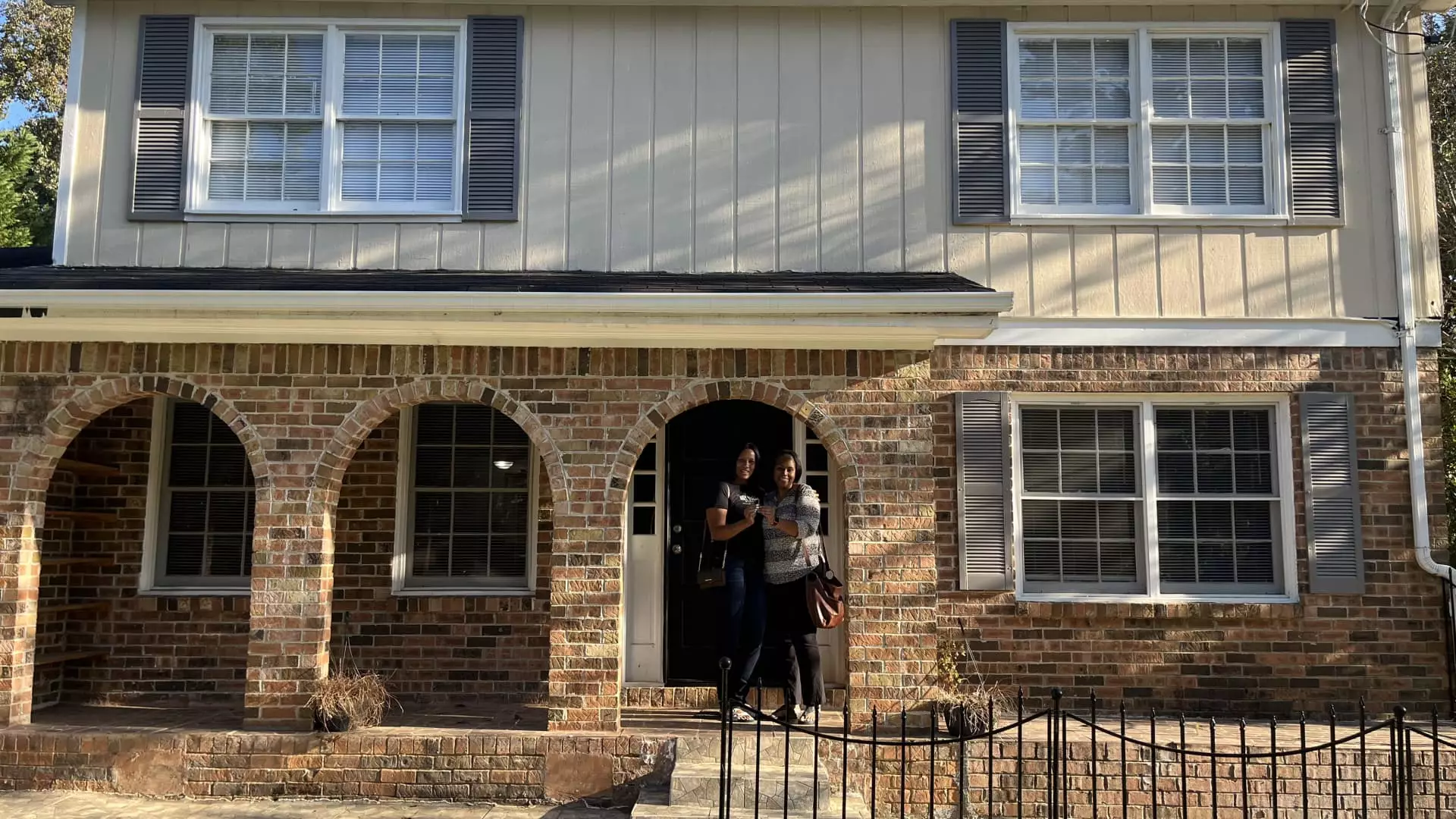The quest for affordable housing has become a significant challenge for many Americans, particularly young professionals entering the housing market. Take, for instance, the recent experiences of 30-year-old social worker Will Hunnicutt, who found himself grappling with high rents and stringent application requirements as he searched for an apartment in Atlanta. With many landlords expecting tenants to earn three and a half times the monthly rent — often exceeding $3,000 — many prospective renters find themselves in a difficult position. This scenario encapsulates the broader struggle faced by many individuals striving to establish stability in a housing market characterized by soaring prices.
In a fortunate turn of events, Hunnicutt discovered a two-bedroom apartment for $1,050 per month, linked to an initiative by Roots, a local real estate investment trust (REIT). Unlike traditional leasing arrangements that might leave renters feeling like mere occupants with no claim to wealth-building, Roots offers tenants a novel approach: a portion of their security deposit is invested to help them accumulate wealth, positioning them closer to homeownership dreams. Incentives such as quarterly rebates for maintaining rental standards further motivate tenants, turning their living spaces into platforms for financial growth.
While initiatives like those by Roots present an innovative approach to renting, they are just a part of a larger puzzle in the quest for homeownership. In today’s market, prospective buyers are faced with the harsh reality of escalating housing prices. Aiming to purchase a typical U.S. home now necessitates a salary of approximately $113,520—35% above the average household income—signifying that the dream of owning a home is receding further from the grasp of many Americans.
One of the most persistent barriers to homeownership is the sizeable down payment, with nearly 40% of non-homeowners citing insufficient savings as a primary obstacle. Recent surveys indicate that a substantial number of Americans are unprepared to meet down payment requirements, underscoring a pressing need for more robust financial education and assistance programs.
To combat the challenges of affording a home, several down payment assistance programs have emerged, offering potential solutions across various states and municipalities. These initiatives typically cater to first-time homebuyers and those who meet specific income criteria, providing crucial financial support that can bridge the gap between renting and owning.
Programs vary widely in scope and availability, with some municipalities and non-profit organizations stepping up to offer significant assistance. For instance, certain localities, such as Chicago and Ithaca, have implemented programs offering anywhere from $9,000 to $20,000 to qualifying buyers. These financial aids can be game-changers for many, providing a necessary boost to help first-time buyers navigate the often daunting process of home acquisition.
Moreover, many programs require participants to complete homebuyer education courses, which aim to equip them with valuable knowledge and skills for making informed financial decisions. Completing these courses not only enhances financial literacy but can also help individuals understand their options in navigating mortgage loans and down payment requirements.
Nevertheless, systemic barriers continue to influence the opportunities available to potential homebuyers, particularly among communities of color. Historical practices such as redlining and exclusionary zoning have contributed to disenfranchisement, leaving many aspiring homeowners without the necessary support. Advocacy groups emphasize the importance of targeted initiatives for first-generation homebuyers. These programs are particularly vital for individuals from families that lack a history of homeownership, as they may not have the familial support that often eases the financial burden of a down payment.
Experts contend that while down payment assistance is critical, awareness of alternative financing options is equally crucial. Many potential buyers mistakenly believe that a 20% down payment is mandatory — a misconception that often deters them from pursuing home ownership. In reality, many first-time homebuyers successfully navigate the market with as little as 3.5% down.
Beyond government assistance and non-profit initiatives, financial education remains pivotal. First-time buyers can benefit from developing well-rounded financial strategies that include saving and potentially tapping into retirement funds, although prudence in preserving those savings is always advised. Moreover, considering low-risk investment vehicles, such as high-yield savings accounts or certificates of deposit, can provide secure pathways for accumulating the necessary funds for a future home purchase.
In a dynamic housing market, it is essential for aspiring homeowners to explore all avenues available to them. Whether through innovative revenue-generating programs like Roots or through robust public assistance initiatives, the journey toward homeownership may yet become a reality for many who remain steadfast in their pursuit of a place to call home. The future may hold promising possibilities as we continue to innovate and address long-standing barriers to equitable homeownership.

